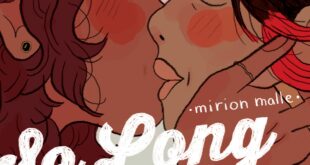In my review of the previous version of the Photo Effects Cookbook I asked the questions: Have you ever wanted to take a photo and turn it into a watercolor? A line drawing? Or a wood cut? While those questions are still valid and applicable, an additional question I have to ask is: if I have the previous version is there any reason to have this one?
To answer that question we have to seek out the differences with this version of Photoshop CS3 Photo Effects Cookbook. The most noticeable difference is that in the prior version there were 61 recipes and in this one there are 53. "Great," you say, "they have removed some of the recipes." Well, yes they have, but they have replaced some as well as removed some. Funny thing is, from my count they've only removed one.
No, this is not some new Photoshop new math (in fact I missed this too). Even though the front cover of the prior version said 61 recipes, there were really only 54! As I painstakingly went through to find out what had changed I could only find one that had not been replaced by another. Pulling out my trusty slide ruler, I was able to divine that this came down to a misprint. Anyway, the new count is correct and so on we go…
Photoshop Photo Effects Cookbook breaks the recipes into nine sections, each dealing with a different effect. The first section is called "Ready to Cook." Its primary purpose is to get you up to speed on what is needed to complete the recipes in the book. You will learn about making selections, working with layers, sharpening, paths and lighting effects.
Another difference in this version from the previous is that now there is a section called "CS3 Improvements." In this new section there is a brief overview of the new features, from which some recipes we will be using. These include Smart Objects, Smart Filters, Multiple Clone Sources, Refine Edges, the new improved Curves, and the Quick Selection tool.
From here, we move on to "Tonal and Color effects." This section is mostly the same with the exception that now the "Creative Black and White" is now using the Black and White Command instead of the Channel Mixer. "Graphic Art Effects" is basically the same as the prior version
"Lighting Effects" removes the section called "Lens Flare" and replaces it with one called "Stage Lighting." This one uses Smart filters to create the effect of stage lighting. "Natural World Effects" removes "Painting Clouds into Skies" and replaces it with "Summer to Autumn." Here you will use CS3's Lighter Color blending mode to add a touch of subtlety to your image to change those green trees to take on that autumn magic.
"Traditional Photographic Effects" removes the section "Simulating Color Filters" and replaces it with "Vintage Hollywood Portraits" and again uses the Black and White Command to recreate the effect. Also removed is "Contrast Masking," replaced with "Sabattier and Solarization Effect" which gives almost a metallic effect. Examples both in color and monochrome are depicted.
"Distortion Effects" removes "Photo Mosaic" and replaces it with "Caricatures" which shows how to create a caricature by using the Transform and Liquefy commands. It also removes "Fish Eye" and adds "Cloning with Perspective" that uses the Vanishing Point Command to clone one area of a building to another. The third change in this section is that the "Displacement Effect" is now replaced with "Adding Tattoos" which uses the clone source capability of CS3 to add the tattoo.
"Texture Effects" remains the same as the prior version and, with the exception of removing "Signature or Monogram Custom Brush," so does "Presentation Effects."
While you don't have to be an expert to use the recipes contained in Photoshop CS3 Photo Effects Cookbook, it will help if you have experience enough to get around in Photoshop. Yes the author runs you through basics, but understanding the fundamentals will have you creating very sophisticated effects in no time. I really liked the step-by-step instruction and the full color examples that were provided.
So is it worth it? Certainly if you never owned this book, by all means, yes. If you own the prior version, that depends. There are seven totally new recipes, some of which use new techniques. Some of those recipes I think are better than the ones in the prior version, so I feel that these are good additions. But as far as owning both versions, this must be a personal choice based on your finances.
One other thing I noticed with this version of Photoshop CS3 Photo Effects Cookbook is that the images are much richer in both color and quality. I did not think that the ones in the prior version had any problems with them, it was just that when comparing them side to side, it was noticeable to me. If you want a real cook book to throw together photographic effects then Photoshop CS3 Photo Effects Cookbook will get you up to speed in no time.
 Blogcritics The critical lens on today's culture & entertainment
Blogcritics The critical lens on today's culture & entertainment



